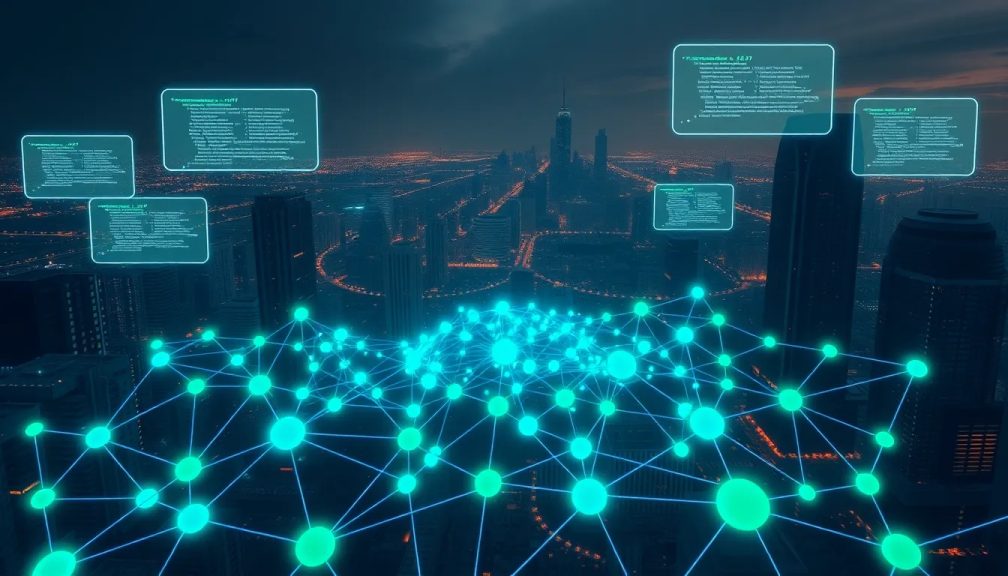Neo4j supports new graph query standard for AI technology

As organizations continue to grapple with vast amounts of data, the ability to efficiently query and analyze that data becomes paramount. In this context, graph databases like Neo4j are gaining traction for their unique capabilities. But how do they compare to traditional databases, especially as we enter an era dominated by artificial intelligence (AI)? This article delves into the evolution of graph databases, their advantages, and the exciting new standards that are emerging to enhance their usability in the AI landscape.
- Understanding graph databases and their unique advantages
- The evolution of query languages in graph databases
- Neo4j and Cypher: A closer look at their capabilities
- Accessibility of graph databases for everyday users
- Integrating AI with graph databases
- Combining data from multiple sources
- Challenges and future of graph databases
- Historical context of Neo4j
Understanding graph databases and their unique advantages
Graph databases are designed to handle complex relationships between data points more effectively than traditional relational databases. Unlike relational databases, which organize data into tables, graph databases focus on the connections between entities. This approach allows them to uncover hidden patterns and insights that would otherwise remain obscured.
- Relationship-focused: Graph databases excel at scenarios where relationships are crucial, such as fraud detection and recommendation systems.
- Efficiency: They allow for direct traversal of relationships, simplifying the discovery of insights without the need for complex JOIN operations.
- Semantic encoding: Graph databases encode the semantics of data relationships, making it easier to analyze interconnected data.
In contrast, traditional relational databases are typically optimized for structured data and transactional applications, making them less suitable for use cases that require complex relationship analysis. This fundamental difference in approach is what sets graph databases apart.
The evolution of query languages in graph databases
For years, the absence of a standard query language for graph databases hampered their adoption compared to relational databases, which rely heavily on SQL as a universally accepted standard. However, the landscape shifted dramatically in April 2024 with the introduction of the Graph Query Language (GQL), which is now recognized as the ISO standard for querying graph databases.
GQL is designed to be closely aligned with Cypher, the query language used by Neo4j. This alignment means that developers familiar with SQL can transition more easily to using graph databases. As more vendors adopt GQL, we can expect to see a significant increase in the use of graph technologies across various industries.
Neo4j and Cypher: A closer look at their capabilities
Neo4j employs Cypher as its primary query language, which has evolved to fully comply with the new GQL standard. Cypher is known for its readability and intuitive structure, making it accessible for users at different skill levels.
For example, a simple Cypher query to find movies related to Tom Hanks looks like this:
MATCH (tom:Person {name:'Tom Hanks'})-[r]->(m:Movie) RETURN type(r) AS type, m.title AS movie
This query effectively finds the node representing Tom Hanks and retrieves the types of relationships he has with various movies, highlighting Cypher's capability to interact with connected data seamlessly.
Accessibility of graph databases for everyday users
Historically, the need for a basic understanding of graph structures posed a barrier for many potential users of graph databases. However, advances in technology are democratizing access to graph databases. Modern tools now offer drag-and-drop interfaces and pre-built algorithms, enabling users without extensive technical backgrounds to explore and analyze graph data.
This shift means that users can begin engaging with graph databases more intuitively, minimizing the need for specialized skills. Developers' roles are evolving; they now act as facilitators rather than gatekeepers, expanding the reach of graph data to a broader audience.
Integrating AI with graph databases
As AI continues to advance, integrating natural language processing with graph databases opens new avenues for interaction. AI models can translate user queries into Cypher queries, allowing users to interact with graph data in a conversational manner.
For instance, a user might ask, "Which customers purchased both product X and product Y recently?" An AI system could interpret this request, generate the appropriate Cypher query, and execute it to retrieve the relevant data. This integration streamlines the user experience, making complex data queries accessible for non-technical users.
Furthermore, tools like Neo4j's LLM Knowledge Graph Builder allow users to create queryable graphs from various document types, making graph exploration even more user-friendly.
Combining data from multiple sources
Modern AI agents are designed to handle queries that span various data types, including relational databases, graph databases, and unstructured data. This capability allows them to deconstruct complex queries into specialized sub-queries, each tailored to the data type being queried.
- Relational databases: AI agents can generate SQL queries to handle structured data efficiently.
- Graph databases: They can translate parts of the query into Cypher to uncover relationships that might be missed in a flat table.
- Unstructured data: LLM-powered agents can utilize vector embeddings to extract meaning from non-standardized data forms.
This hybrid approach enables organizations to leverage the unique strengths of each data paradigm, ultimately leading to richer insights and more accurate responses. By using techniques like Graph Retrieval-Augmented Generation (GraphRAG), AI agents can synthesize complex queries and deliver coherent results that draw from multiple data sources.
Challenges and future of graph databases
Despite their advantages, graph databases are not without challenges. One significant limitation is the difficulty in vectorizing graph data, as traditional vectorization methods can obscure the relationships inherent in graph structures. While vector-based methods are useful for similarity searches, they cannot capture the navigable nature of graph databases.
However, Neo4j has integrated native vector search capabilities to enhance its functionality. This allows for the preservation of graph structure while also enabling similarity searches, effectively combining the strengths of both methodologies.
Historical context of Neo4j
Understanding the trajectory of Neo4j provides valuable context for its current capabilities and future potential:
- 2000: Neo4j's concept originated when its founders recognized the need for a database that could handle complex relationships better than traditional databases.
- 2007: Neo4j, Inc. was founded, launching the first version of the graph database as an open-source project.
- 2010: The release of version 1.0 included the Cypher query language, simplifying graph data interaction.
- 2011-2014: The company grew, transitioning to a dual-licensing model and expanding its user base.
- 2018: Neo4j 3.4 introduced enhancements for cloud integrations and native graph processing.
- 2020: The launch of Aura, a fully-managed cloud service, streamlined graph database deployment.
- Present (2025): Neo4j continues to evolve, focusing on AI integration and cloud-native features, now serving over 80 Fortune 100 customers.
For more information about Neo4j and its offerings, visit Neo4j.
In the rapidly evolving landscape of data management, graph databases like Neo4j are poised to play a critical role in helping organizations uncover insights from complex relationships, particularly as they integrate with AI technologies. The future of data querying is indeed graph-based, and with ongoing advancements, we can expect these tools to become increasingly accessible and powerful.




Leave a Reply